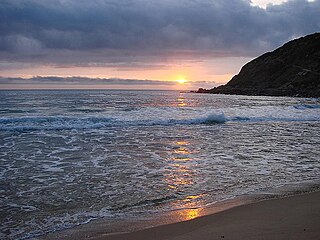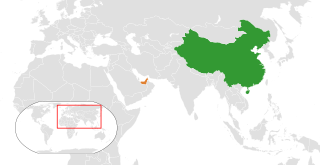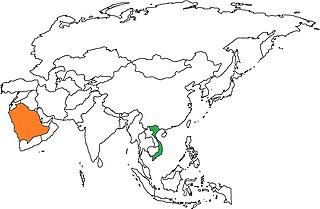 | |
United Arab Emirates | Vietnam |
|---|---|
The United Arab Emirates has an embassy in Hanoi, while Vietnam has an embassy in Abu Dhabi.
 | |
United Arab Emirates | Vietnam |
|---|---|
The United Arab Emirates has an embassy in Hanoi, while Vietnam has an embassy in Abu Dhabi.
Although the two countries are for the most part culturally and religiously different, the Chams, an indigenous people in Central and Southern Vietnam share the same religion as Emiratis and had embraced Islam as for the result of the historical trades from the Arab traders as well as Malay traders, who brought Islam into the region. [1]
Since the 1986 economic reform in Vietnam, the UAE has become one of the largest Arab and Islamic economic investors in Vietnam. [2] The UAE is also a donor for several construction of mosques in Vietnam, including Vietnam's largest mosque was opened in January 2006 in Xuân Lộc, Đồng Nai Province; its construction was partially funded by donations from Saudi Arabia and the United Arab Emirates. [3] The UAE also provides Islamic education to the Vietnamese Muslim community, notably the Chams.

The economy of the United Arab Emirates is the 5th largest in the Middle East, with a gross domestic product (GDP) of US$501 billion in 2022.

The United Arab Emirates, or simply the Emirates, is a country in Western Asia. It is located at the eastern end of the Arabian Peninsula and shares borders with Oman and Saudi Arabia, while having maritime borders in the Persian Gulf with Qatar and Iran. Abu Dhabi is the nation's capital, while Dubai, the most populous city, is an international hub.

Đồng Nai is a province in the Southeast region of Vietnam, located east and northeast of Ho Chi Minh City (Saigon). The largest city in Đồng Nai is Biên Hòa.

Phú Yên is a coastal province in the South Central Coast of Vietnam. It is the easternmost province of Vietnam's mainland.

The majority of Vietnamese do not follow any organized religion, instead participating in one or more practices of folk religions, such as venerating ancestors, or praying to deities, especially during Tết and other festivals. Folk religions were founded on endemic cultural beliefs that were historically affected by Confucianism and Taoism from China, as well as by various strands of Buddhism. These three teachings or tam giáo were later joined by Christianity which has become a significant presence. Vietnam is also home of two indigenous religions: syncretic Caodaism and quasi-Buddhist Hoahaoism.

Islam in Vietnam is primarily the religion of the Cham people, an Austronesian minority ethnic group; however, roughly one-third of Muslims in Vietnam are of other ethnic groups. There is also a community, who describes itself of mixed ethnic origins, that practices Islam and are also known as Cham, or Cham Muslims, around the region of Châu Đốc in the Southwest.

The Sheikh Zayed Grand Mosque is located in Abu Dhabi, the capital city of the United Arab Emirates. The largest mosque in the country, it is the key place of worship for daily prayers.
Indians in Vietnam consist of migrants to Vietnam from India, both historical and recent. As of 2011, there were about 2,000 people of Indian origin settled in Vietnam, mainly in Ho Chi Minh City. Prior to the Vietnam War, there was a vibrant Indian community consisting of primarily Tamils, and specifically the Chettiars.

Indians in the United Arab Emirates Arabic: الهنود في الإمارات العربية المتحدة, romanized: al-Hunūd fī al-ʾImārāt al-ʿArabīyah al-Muttaḥidah) constitute the largest part of the population of the country. Over 3,420,000 Indian expats are estimated to be living in the UAE, which is over 38 percent of the total population of the UAE. Indian contact with the emirates that now constitute the UAE dates back several centuries, as a result of trade and commerce between the emirates and India. The UAE has experienced a tremendous increase in the population of resident Indians who initially migrated to the country as a result of opportunities in petroleum. Now, Indians are key to the UAE's construction, retail, financial services, healthcare, manufacturing and transport sectors. A sizeable minority of Indian migrants are involved in professional services and entrepreneurship. Relations between India and the UAE have traditionally been friendly.

Abu Dhabi is the capital and the second-most populous city of the United Arab Emirates. It is also the capital of the Emirate of Abu Dhabi and the centre of the Abu Dhabi Metropolitan Area.

Malaysia–United Arab Emirates relations refers to foreign relations between Malaysia and United Arab Emirates. United Arab Emirates has an embassy in Kuala Lumpur, and Malaysia has an embassy in Abu Dhabi. Relations between the two countries are mainly in economic co-operation.

Turkey and the United Arab Emirates share extensive cultural, military and economic ties, but relations have substantially deteriorated in recent years.

China – United Arab Emirates relations refer to the diplomatic relations between the People's Republic of China and the United Arab Emirates. Diplomatic ties were first established in 1984. The UAE maintains an embassy in Beijing and a consulate-general in Hong Kong while China has an embassy in Abu Dhabi and consulate-general in Dubai. The UAE and China have been strong international allies, with significant cooperation across economic, political and cultural aspects.
Most expatriates in the United Arab Emirates reside in Dubai and Abu Dhabi, UAE. A number of immigrants settled in the country prior to independence. The UAE is home to over 192 nationalities. Emiratis constitute roughly 20% of the total population, making UAE home to one of the world's highest percentage of expatriates. Indians and Pakistanis form the largest expatriate groups in the country, constituting 28% and 12% of the total population respectively. 471,000 Westerners live in the United Arab Emirates, making up 5.1% of its total population.

Indonesia and the United Arab Emirates (UAE) established diplomatic relations in 1976. The diplomatic relations are important because both share the solidarity as Muslim majority countries. Indonesia has an embassy in Abu Dhabi, while the United Arab Emirates has an embassy in Jakarta. Both countries are members of the World Trade Organization (WTO), The Non-Aligned Movement and Organisation of Islamic Cooperation (OIC).
The Embassy of Canada to the United Arab Emirates is Canada's diplomatic mission to the United Arab Emirates. The embassy is located on the 9th and 10th floors of the West Tower of the Abu Dhabi Trade Center, next to Abu Dhabi Mall.

Shia Islam is practiced by a minority of Muslims in the United Arab Emirates. It is also practiced among expatriate Muslim communities living in the country, most notably Iranians, as well as some Arabs, Pakistanis, Indians, and other nationalities. Non-Twelver Shia branches such as Ismailis and the Dawoodi Bohras are also present in the UAE and account for less than 5% of the total population. Shia nationals are concentrated in the city of Dubai, belonging mostly to the latest (1920s) wave of migrants who managed to obtain citizenship.

The architecture of the United Arab Emirates has undergone dramatic transformation in recent decades, from operating as a collection of fishing villages to a global business hub known for its innovation and dynamism. Between the 1960s and 1970s, architecture in the United Arab Emirates (UAE) remained solely traditional, with narrow alleys and windtower houses still in use, reflective of a strong Bedouin heritage. Architecture is influenced by elements of Islamic, Arabian and Persian culture.

Polish-Emirati relations are foreign relations between the Republic of Poland and the United Arab Emirates. Poland has an embassy in Abu Dhabi, and the United Arab Emirates has its counterpart in Warsaw.

Saudi Arabia – Vietnam relations refer to the political, economic and bilateral relationship between Kingdom of Saudi Arabia and Socialist Republic of Vietnam. Vietnam has an embassy in Riyadh and Saudi Arabia has an embassy in Hanoi.